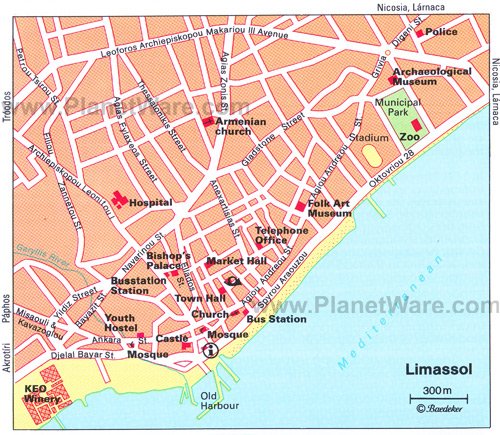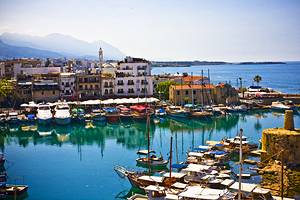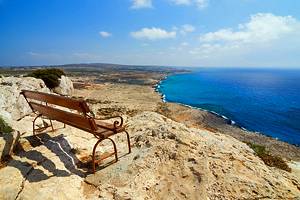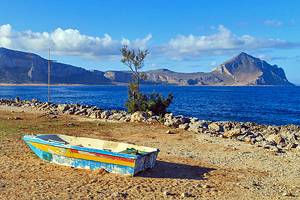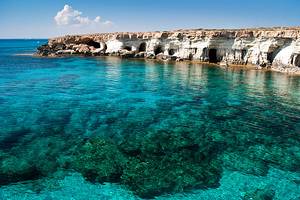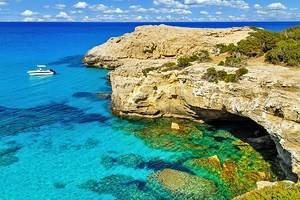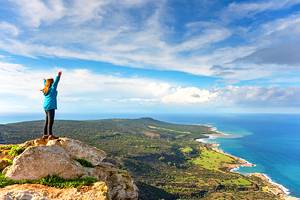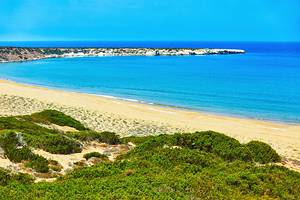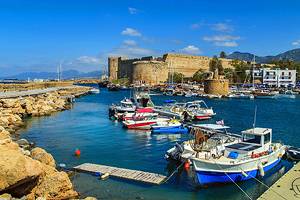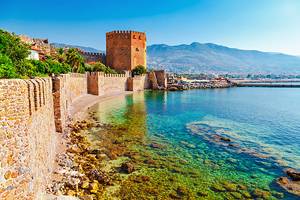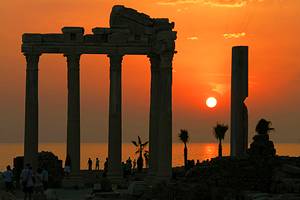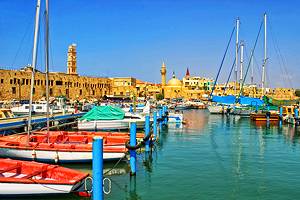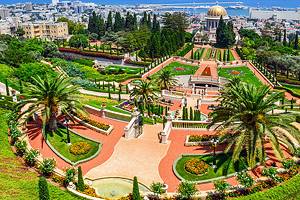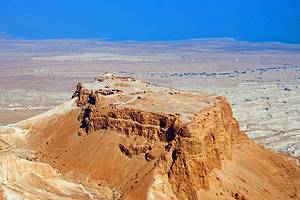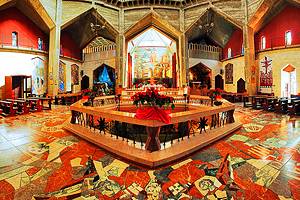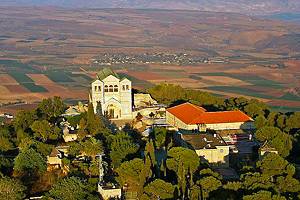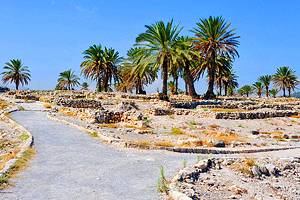Attractions & Things to Do in Limassol
Limassol (also known as Lemesos) is a shoreline city that sweeps along a broad stretch of beach. This is the cosmopolitan hub of Cyprus, effortlessly blending modern beach-focused tourism and café culture with its ancient past.
Hip restaurants and cafés cluster around the restored old town center, while on the seafront, the old port area neighbors a snazzy, contemporary marina that has become another popular eating out hub.
Limassol is perfectly placed to explore the tourist attractions and beaches of the Akrotiri Peninsula, as well as enjoy sightseeing road trips to the gorgeous mountain villages that tumble down the lower slopes of the Mandaria region and snuggle within the Troodos Massif (Troodos Mountains).
It's also the nearest base to visit Ancient Kourion, Cyprus' most famous historic site, so it's a great choice for travelers who want to temper the sandy beach-bum fun with swags of culture.
Make the most of your time while here by using this list of the top attractions and things to do in Limassol.
- Explore Ancient Kourion
- Relax on Limassol's Beaches
- Delve into the Attractions of Limassol Old Town
- Visit Kolossi Castle
- See Sunset at Aphrodite's Rock (Petra tou Romiou)
- Road Trip around the Troodos Mountain Churches
- View the Akrotiri Peninsula
- Stroll the Alleys of Lofou Village
- Hike in the Hills around Platres
- View the Sanctuary of Apollo
- Admire the Architecture of Kykkos Monastery
- Day Trip to Pedoulas Village
- Delve Deep into History at Choirokoitia
- Explore the Remnants of Ancient Amathus
- See the Collection inside Limassol Archaeological Museum
- Limassol, Cyprus - Climate Chart
Explore Ancient Kourion
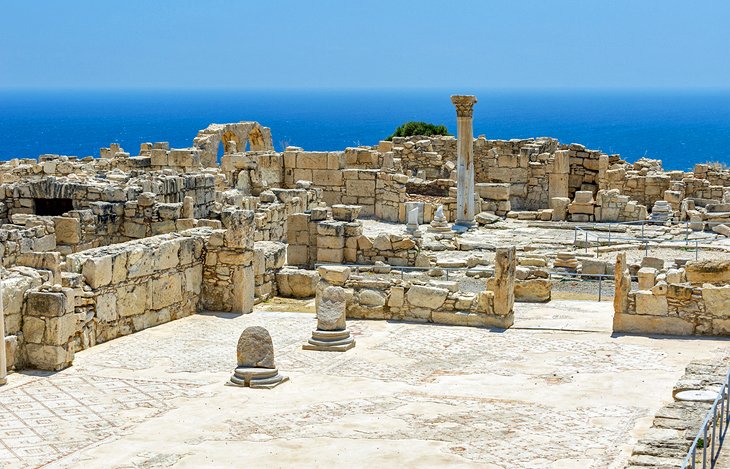
One of Cyprus' top tourist attractions and most spectacular archaeological sites, the ancient city-kingdom of Kourion (sometimes spelt Curium) rates highly on most visitors' things to do itineraries.
Kourion has been settled since the Neolithic age, though the grand monuments on show all date from its Greco-Roman period.
The small theater (with seating for 3,500 spectators) was built in the 2nd century and then extended by the Romans.
It has been completely reconstructed, having been destroyed by an earthquake in the 4th century. The views over the jagged coastal cliffs and out to the Mediterranean Sea are superb from here.
For mosaic fans, Ancient Kourion's most interesting area is next door in the House of Eustolios which originally functioned as a rather magnificent private Roman villa but was turned into a public recreation center and public baths during the Byzantine era.
The fine mosaic floors here are exceptionally well-preserved. Look for the mosaic of Achilles disguised as a woman and the famous four-panel mosaic depicting a partridge and the god Ktisis.
Further along the cliff edge are the ruins of a 5th century Byzantine basilica, a Roman Nymphaeum (decorated fountain), and extensive public bath remnants.
From here, a short path leads to the small House of the Gladiators, so called because of the mosaics of a gladiator combat still in-situ on the floor.
After exploring the site, head to the nearby village of Episkopi (two kilometers northeast) to visit the Kourion Museum. The collection here includes a wealth of smaller artifacts unearthed from both Kourion and the Sanctuary of Apollo.
Ancient Kourion is 18 kilometers west of central Limassol.
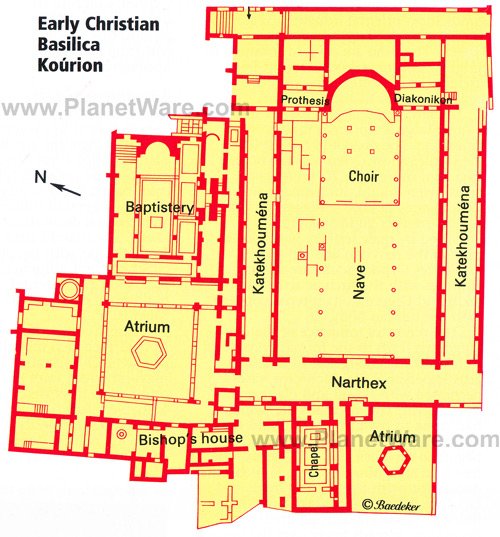
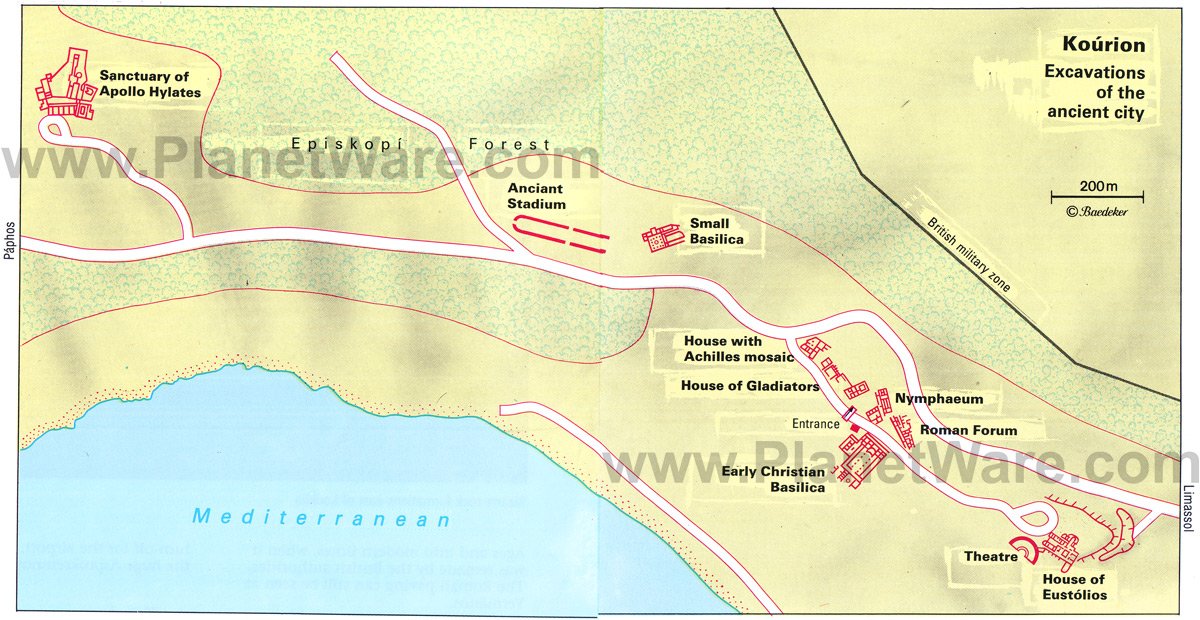
Relax on Limassol's Beaches
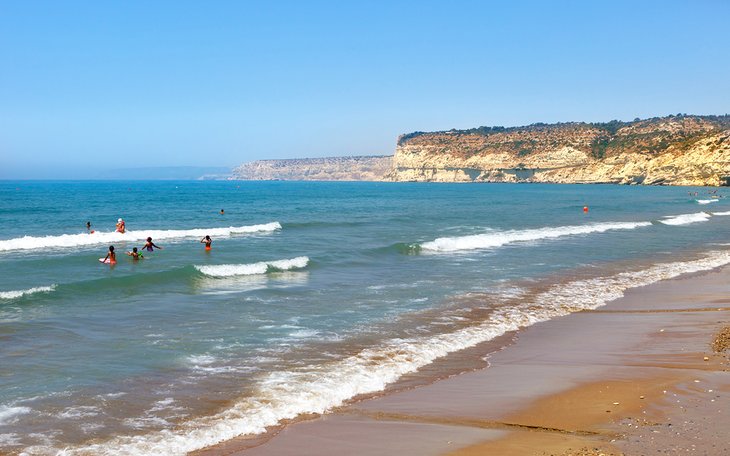
For many visitors, a holiday in Limassol means one thing: the beach.
The long, sandy eight-kilometer stretch of Lady's Mile Beach (13 kilometers southwest of Limassol) is on the eastern shore of the Akrotiri Peninsula and is one of the most popular local beaches, with the interesting landscape of the salt lake running behind the shore.
Kourion Beach (17 kilometers west of Limassol) is below the mighty ruins of Ancient Kourion and boasts a wide sweep of golden-beige sand backed by cliffs, and the remains of a 6th century basilica nearby - in case you need a dose of culture with your sunbathing.
Avdimou Beach (27 kilometers west from Limassol) is a long beach with a sandy shore, pleasant swimming, and a small café and a jetty at the eastern end.
Pissouri village (10 kilometers west of Avdimou) has an enticing beach with a pleasant stretch of sand. The village is on a cliff top and has plenty of pretty cafés and boutiques to visit when you've packed the sand castle action up for the day.
Delve into the Attractions of Limassol Old Town

Limassol's lively old town district is the most interesting part of the city to explore.
Right in the center, on the main square, the top tourist attraction is Limassol Castle, built in the 14th century on the site of an earlier Byzantine construction. Some of the earlier fortifications can be seen just inside the walls.
This is where Richard the Lionheart of England married Berengaria, and later, the Ottomans used it as a military base.
The entire interior of the castle is now home to Limassol Medieval Museum with a fascinating collection of suits of armor, weaponry, religious icons, and tombstones.
The main square is rimmed by cafés and restaurants always bustling with Limassol's bright young things.
After dosing up on castle history, check out the city's modern vibe at the innovative Lanitis Art Foundation (also on the main square), housed in an old Carob Mill and home to a rotating schedule of exhibitions.
A hop-skip-and-jump east from the square is bulky Limassol Cathedral, with a wonderfully Baroque facade, while down a squiggle of an alleyway is the small Grand Mosque, surrounded by palm trees.
Visit Kolossi Castle
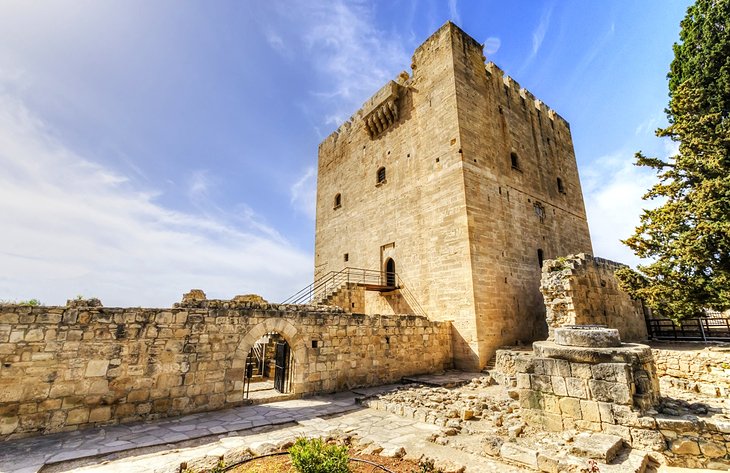
Probably the dinkiest castle you're ever going to see, Kolossi Castle was built in 1210 CE by the Knights of St. John. Just 10 kilometers west of central Limassol, it's one of the best places to visit on the road between Limassol and Ancient Kourion.
It is a fine example of military architecture and served as the Grand Command center of Jerusalem's Order of St. John until being taken over by the Order of the Knights Templar in the 14th century.
You enter the castle across a tiny drawbridge, which brings you into a large chamber with a decently-preserved fresco depicting Jesus' crucifixion on the main entrance wall.
A narrow spiral staircase leads you up to the second level with two stone-cut chambers, and then onto the battlemented roof with excellent views across Kolossi village below.
Beside the main castle building is the ruins of a medieval factory where the knights processed sugar cane.
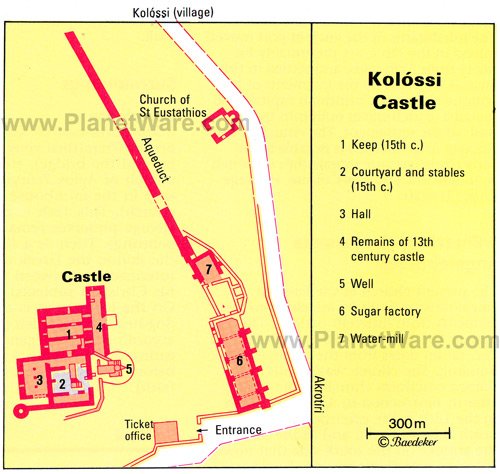
See Sunset at Aphrodite's Rock (Petra tou Romiou)
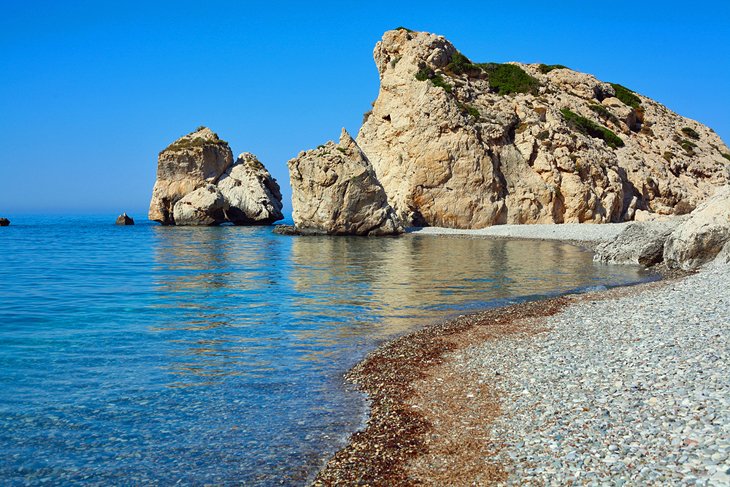
Local lore says this is the spot where the goddess Aphrodite emerged from the waves. Today, it is one of the island's most magical places to visit at sunset.
The Greek name of the rock "Petra tou Romiou" or "Rock of the Greek" is associated with the legendary Byzantine frontier-guard Digenis Akritas. It is said he kept Arab pirates at bay by throwing rocks at them from the hillside above.
Two large rocks jut out into the sea here, creating one of Cyprus' most photographed beachscapes.
The setting has been the source of inspiration for many poets and painters; most famously Boticelli's Birth of Venus painting (in Florence).
Although the actual beach is shingle rather than sand, this is a top picnicking haunt and a must-stop for anyone tootling along the coastline between Limassol and Paphos.
Aphrodite's Rock is on the main coastal highway, 43 kilometers west of Limassol.
Road Trip around the Troodos Mountain Churches
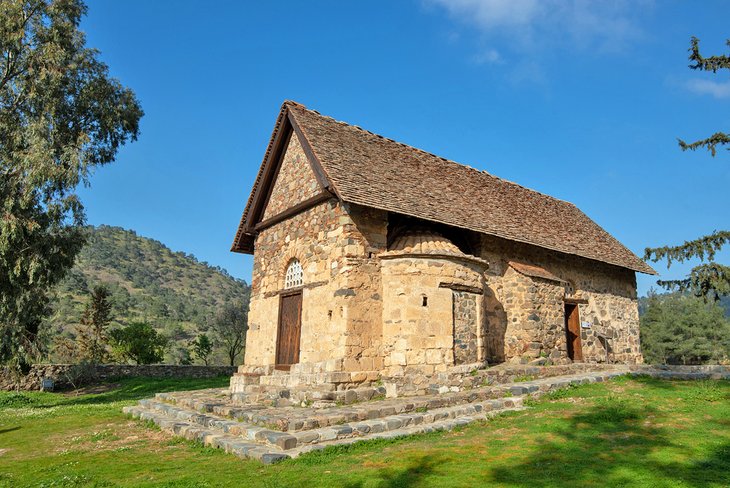
For a day trip taking in some of the best preserved frescoes of Cyprus' Troodos Mountain churches, head to the Solea Valley. The stone chapels that dot the forested slopes here are tiny and modest, but their interiors are a riot of vibrant Byzantine-era art.
One of the most important UNESCO World Heritage-listed churches here is the Panagia Asinou near Nikitari village. The entire interior is covered in colorful frescoes of saints and Biblical scenes. Some of the earliest paintings here have been dated back to the 12th century.
The Panagia Podithou, just north of Kakopetria village, was originally built as part of a 16th-century monastery. Its 16th- and 17th-century frescoes are notable examples of the later Italo-Byzantine art, which was strongly influenced by the Italian Renaissance style.
You'll need your own transport to head to the churches, so this is an excellent option for a self-drive tour.
Kakopetria, the Solea Valley's main village, has plenty of options for lunch.
View the Akrotiri Peninsula
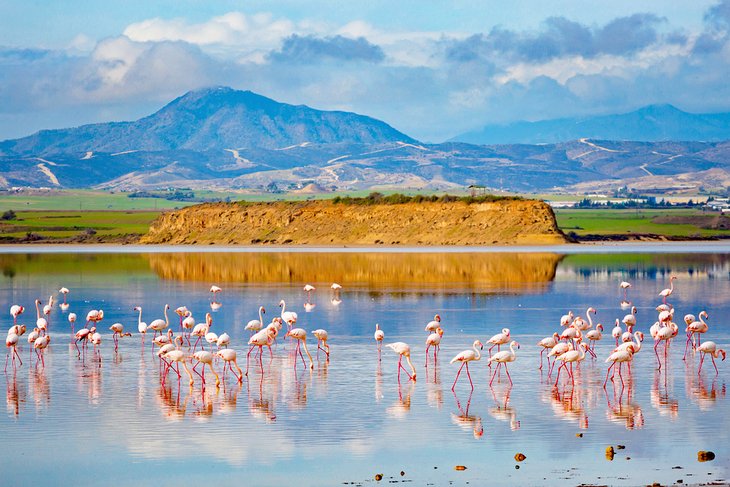
The Akoriti Peninsula slithers south from Limassol covered with citrus plantations and large stands of cypress trees and with a salt lake at its core.
Much of the peninsula is part of the Akrotiri British Sovereign Base, although driving along its length there's not much sign that you've passed from Cypriot to British territory.
The salt lake here, six kilometers southwest from central Limassol, is a major overwintering site for greater flamingos and is one of the Mediterranean's most important wetland sites for wading birds.
Right at the tip of the peninsula is the Holy Monastery of St. Nicholas of the Cats, founded in CE 325, although the current buildings date from the 13th century.
Above the north entrance is a marble section dating from the medieval period and depicting four coats of arms.
The monastery gets its rather long name from the multitude of cats that sprawl out across the grounds and were first introduced from Egypt here in the 4th century to try to control the peninsula's snake problem. The method worked and instead of snakes, the monastery (and Cyprus as a whole) is now overrun with cats.
The small community of nuns who live here sell their own jams and honey to visitors.
Stroll the Alleys of Lofou Village
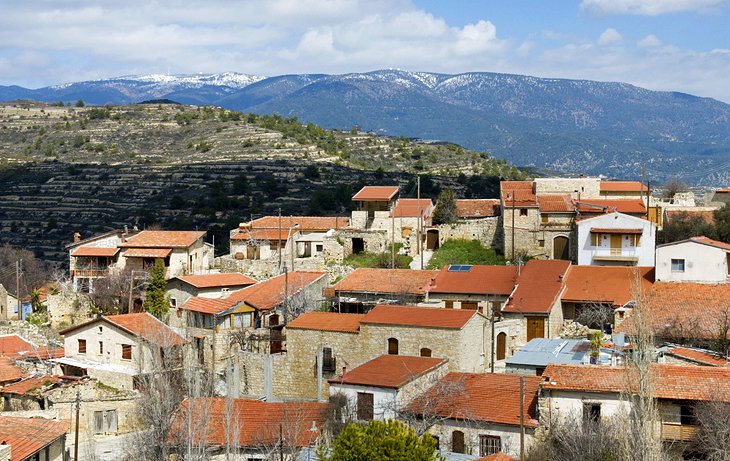
Lovely little Lofou is all cobblestone alleyways and limestone-wall and red-roof houses – the epitome of the typical villages of the Mandaria region. Surrounded by orchards and fields sprouting wild fennel, this snoozy place is the perfect opportunity to stroll aimlessly and soak up traditional Cypriot life.
Old ladies sit on doorstep stoops gossiping between the clicks of their knitting needles, while goats rummage in back lanes full of colorful baskets of geraniums and marigolds.
The Church of Panagia Chrysolofitissa dominates the western side of the village and is said to have been built directly on the site where local shepherds saw a light emanating while grazing their flock. Investigating this phenomenon, the shepherds found an icon of the Virgin Mary and built the church here to honor her.
Constructed between 1854 and 1872, the interior boasts fine frescoes portraying the lives of various saints, and a particularly beautiful mezzanine floor.
Lofou is 28 kilometers northwest of central Limassol. Public transport into the Mandaria region is exceedingly limited, so it's best to hire a car.
Hike in the Hills around Platres
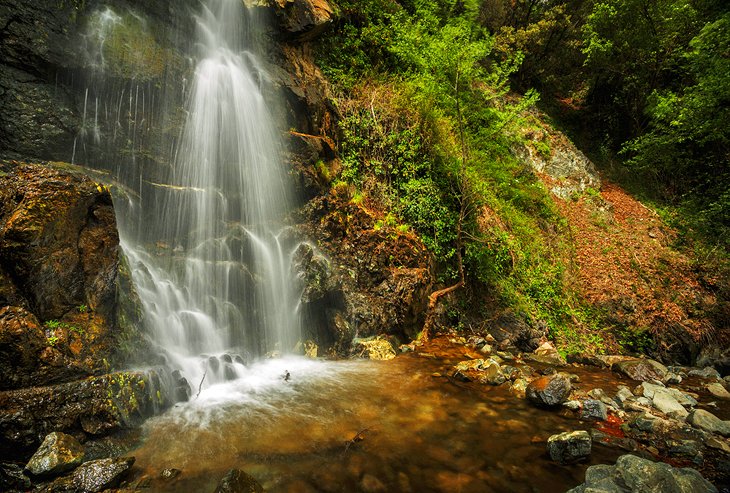
High up in the Troodos Massif is the tiny village of Platres, which hums with visitors both local and foreign in the summer, when the coast temperatures start to sizzle. This is the ultimate high-hills resort, which first found favor during the British colonial period and has played host to numerous famous heat-escapees including King Farouk of Egypt.
Today, it's a favored bolt-hole for hikers and nature-lovers attracted by the lush and beautiful Troodos Mountains.
Despite the onset of tourism, the village has hung on to much of its traditional character. The narrow streets are rimmed with well-preserved, sturdy stone houses; many sporting creaky overhanging balconies.
Just out of town are the cooling waters of the Kaledonian Falls, while those in the mood for more than a meander can pull their hiking boots on and hit the downhill trail to the village of Foini or, for something more exerting, the uphill hike to the village of Pouziaris.
Buses from Limassol leave three times daily for Platres, which is 39 kilometers north of town.
View the Sanctuary of Apollo
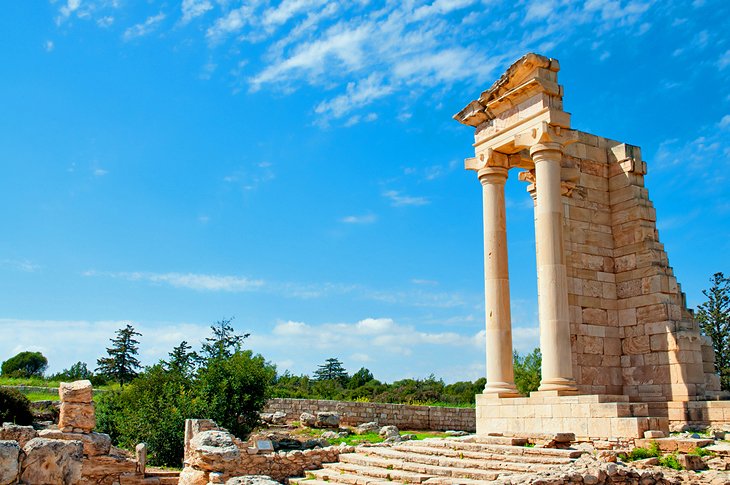
Celebrating Apollo Hylates, God of the Woodland and protector of Ancient Kourion, this temple ruin dates from the 8th century BCE to the 4th century CE. Excavations have revealed other structures that once stood on the site, including a bath complex, pilgrim hall, and holy precinct.
Today though, the triumphant pillars of the lonely main sanctuary building are the only well-preserved portion of what must have been a rather impressive religious compound.
Visitors can also see the Priest's House where there are remnants of a mosaic. A paved route then passes along the portico of the South Building and down a flight of steps to a Palaestra (sporting arena) once used for athletic games.
The Sanctuary of Apollo is only three kilometers west of Ancient Kourion (20 kilometers west of central Limassol) and is best visited as part of a Kourion trip.
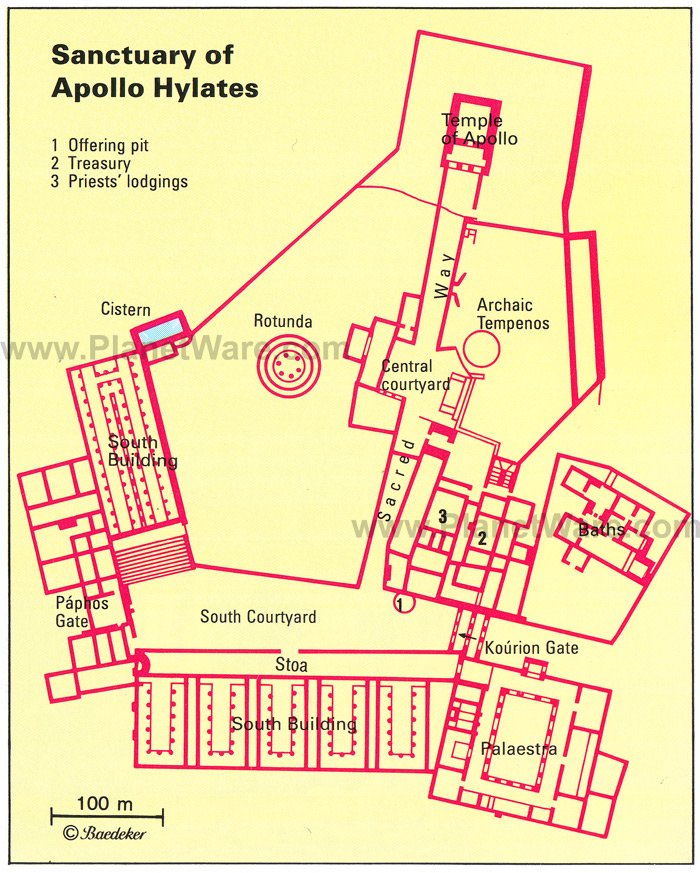
Admire the Architecture of Kykkos Monastery
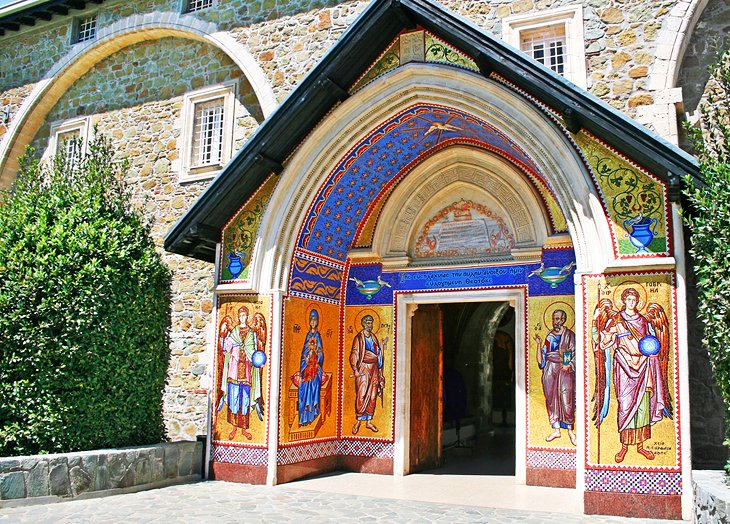
This Greek Orthodox monastery, about 74 kilometers north of Limassol, is one of Cyprus' most important.
It was built under command of the Byzantine Emperor Alexios I after a local hermit ascetic received a vision of an icon of the Virgin Mary painted by St. Luke arriving in Cyprus from Constantinople (today's Istanbul) and convinced a local governor to go to the Byzantine capital to collect it.
The governor, who had been suffering from illness, became well once he'd completed his mission and convinced the emperor to build a church near the hermit's cave.
Today, that very same icon sits in pride of place within the monastery despite most of the original monastery structure having been destroyed by fire. The current building dates to 1831.
Next door to the monastery is a highly interesting Byzantine Museum which holds an important religious artifact collection owned by the monastery. There is a vast amount of iconography, manuscripts, and religious art here.
Both Kykkos Monastery and the Byzantine Museum are 20 kilometers west of the village of Pedoulas in the Troodos Massif.
Day Trip to Pedoulas Village
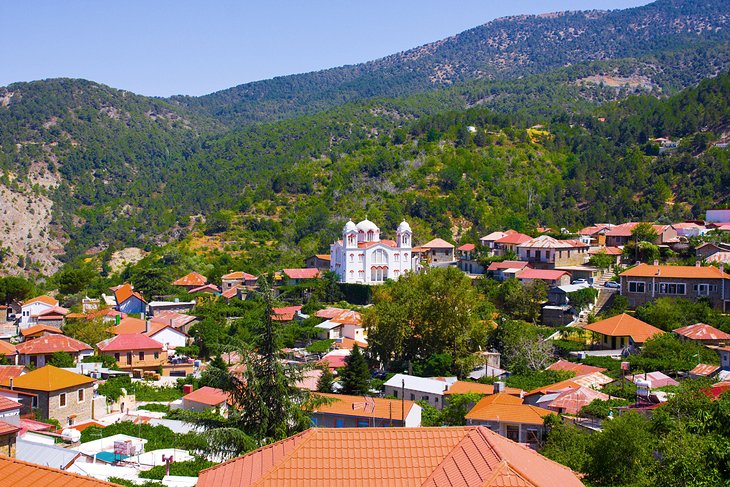
Pedoulas is snuggled into the Marathasa Valley of the Troodos Massif and is home to a clutch of cultural attractions, including the fresco-covered Church of Archangelos Michail and a folk museum.
The church is the village's most famous tourist attraction, as it's one of the UNESCO World Heritage-listed painted churches of the Troodos Mountains. It dates from 1474, with some fine frescoes of biblical scenes gracing its interior.
To delve into traditional Cypriot culture, head next to the Folk Museum, which holds exhibits on the history and distinctive way-of-life of the locals of the Marathasa Valley through the centuries.
Pedoulas is 60 kilometers northwest of Limassol. The town makes a great base for exploring the Troodos Mountains, so it has plenty of accommodation options if you want to stay the night rather than day trip from the coast.
Delve Deep into History at Choirokoitia
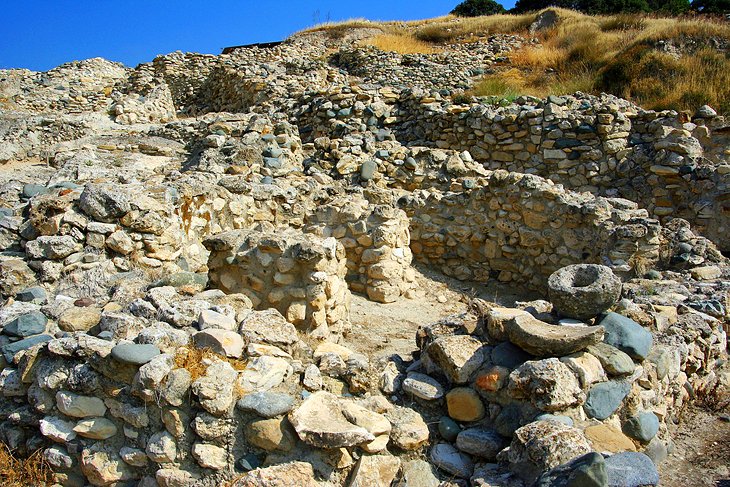
Choirokoitia is one of the most important Neolithic settlements in the world. It's on the main coastal road, sitting 37 kilometers east of Limassol and 34 kilometers west of Larnaca, so it is easily visited while traveling between the two towns.
The ruins here, consisting mainly of the foundations of circular houses and tombs all ringed by a defensive wall, have been dated back to roughly 6,800-5,250 BCE.
Archaeological excavations here have discovered that each house in the settlement had a flattened earth floor, raised platforms at the edges for sleeping, a fireplace, and a central pole to support the roof. The houses were built close together and linked by narrow passageways across the hillside.
The site has four main areas. The first area contains significant remains of house foundations including a larger house up to nine meters in diameter.
The second area, farther up the road, has houses B and C, where archaeologists unearthed numerous burial plots.
Area 3 has several house foundations again, including house F, which contained 26 burials.
The final area is at the far end of the site, up the hill. From here, you can see the remnants of the defensive walls, and it is possible to get a clearer impression of the site as a whole, which is otherwise quite confusing.
For the layman, the site can be slightly underwhelming as the foundations are all that remain, but Choirokoitia's significance cannot be understated. Work by archaeologists here has yielded numerous finds, including decorated pottery and artifacts that prove that this Neolithic culture was highly sophisticated.
Most of the finds can be seen in the Cyprus Museum in Nicosia.

Explore the Remnants of Ancient Amathus
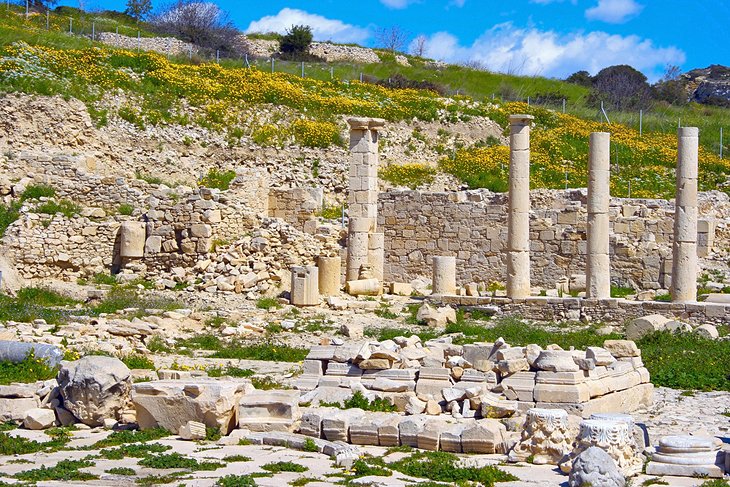
According to mythology, this is where the god Theseus left the pregnant Ariadne after his battle with the Minotaur. Amathus has been settled since approximately 1000 BCE and was one of the island's original four city-kingdoms.
The first inhabitants here were probably Mycenaean, although there is no definite evidence to prove this. The remains on show today date mostly from the Roman and Byzantine eras.
During the Roman period, Amathus was an important port city, which made its money by exporting the island's copper and timber, but the city's age of glory began to crumble during the 4th century after it fell victim to a series of devastating earthquakes.
The ruins are spread out and there isn't as much to see as in Kourion. The most easily visible feature is the Agora where a large number of pillars have been reconstructed, and the vestiges of some early walls can be seen.
On the hill above are the remnants of the Acropolis and the Temple of Aphrodite, with the entrance marked by a large stone jar, while at the bottom of the hill is a ruined Byzantine basilica.
Ancient Amathus lies on the seafront road on the northeastern edge of Limassol, 11 kilometers from the old town center.
See the Collection inside Limassol Archaeological Museum
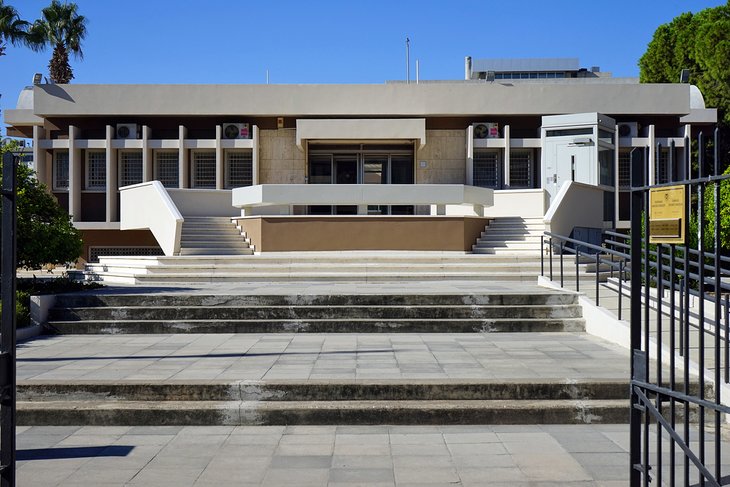
Just behind Limassol Municipal Gardens is the city's archaeological museum which houses an interesting collection of antiquities found in the Limassol area that date from the Neolithic Age up to the Roman period.
Room One contains Neolithic tools and pottery that were excavated at Kourion and Amathus, as well as the city itself. It's a mind-boggling display of Cyprus' vast history covering a huge time span from 3000 BCE to 1300 CE.
Room Two holds artifacts from the Greco-Roman era including a stunning bronze bull and some delicate figurines, while Room Three contains some of the most important finds from the local area, including statues of the Egyptian god Bes and the goddess Artemis unearthed at Amathus.
Outside, within the pleasant garden, is a sundial, which was once owned by Lord Kitchener.
Address: 5 Vyronos Street, Limassol
Limassol, Cyprus - Climate Chart
| Average minimum and maximum temperatures for Limassol, Cyprus in °C | |||||||||||
| J | F | M | A | M | J | J | A | S | O | N | D |
| 14 6 | 15 6 | 18 7 | 23 10 | 28 16 | 33 18 | 36 21 | 36 21 | 33 18 | 27 14 | 22 11 | 17 7 |
| PlanetWare.com | |||||||||||
| Average monthly precipitation totals for Limassol, Cyprus in mm. | |||||||||||
| 74 | 51 | 33 | 20 | 28 | 10 | 1 | 1 | 5 | 23 | 43 | 76 |
| Average minimum and maximum temperatures for Limassol, Cyprus in °F | |||||||||||
| J | F | M | A | M | J | J | A | S | O | N | D |
| 58 42 | 59 42 | 65 44 | 74 50 | 83 60 | 91 65 | 97 69 | 97 69 | 91 65 | 81 58 | 72 51 | 62 45 |
| PlanetWare.com | |||||||||||
| Average monthly precipitation totals for Limassol, Cyprus in inches. | |||||||||||
| 2.9 | 2.0 | 1.3 | 0.8 | 1.1 | 0.4 | 0 | 0 | 0.2 | 0.9 | 1.7 | 3.0 |
